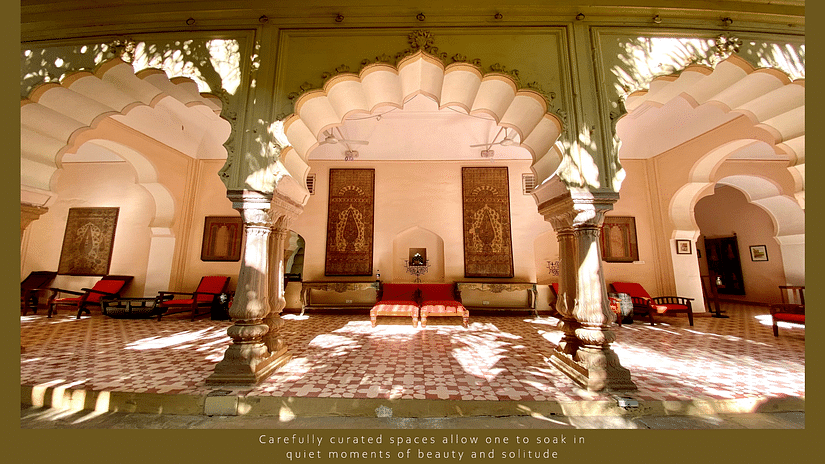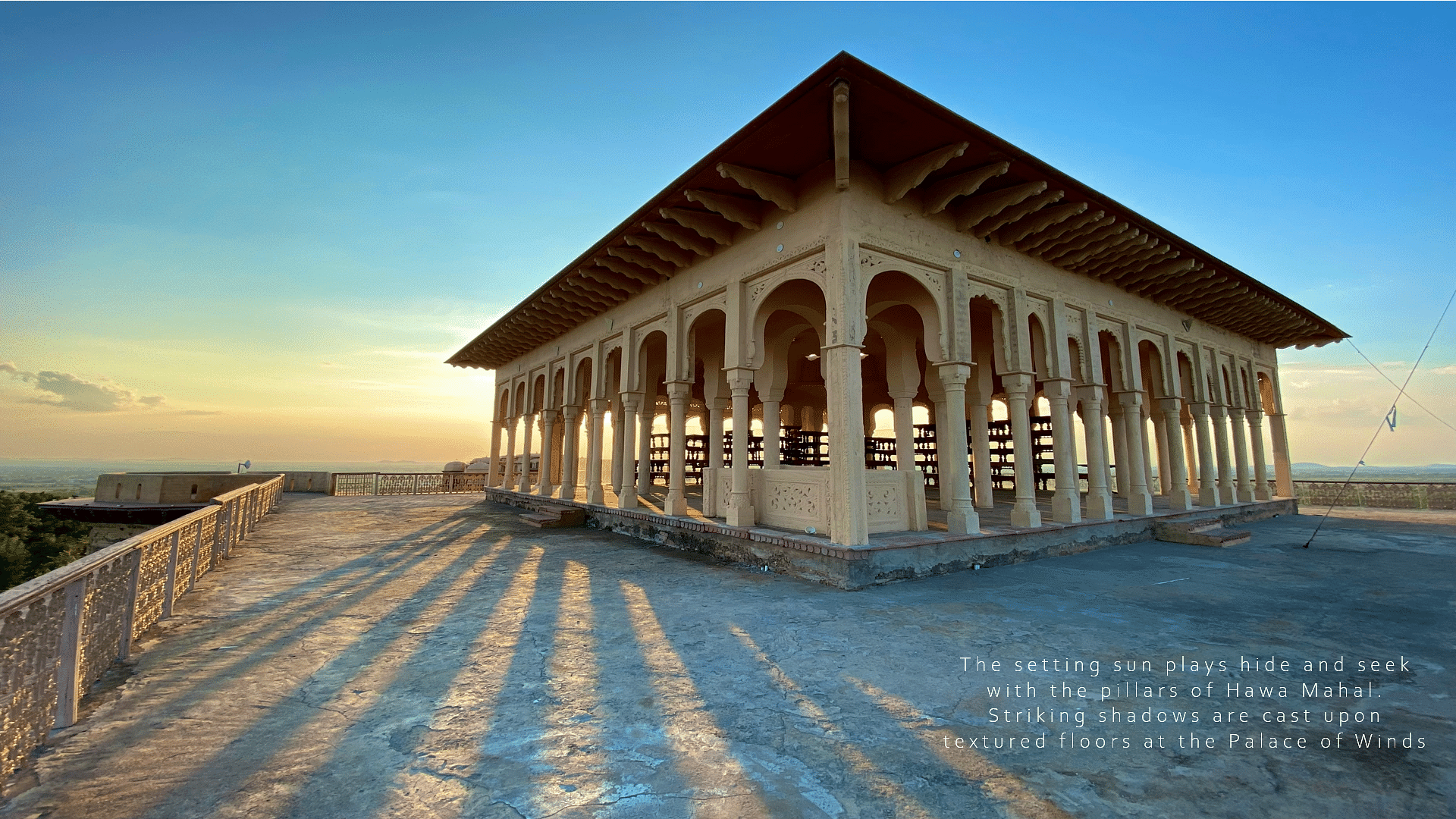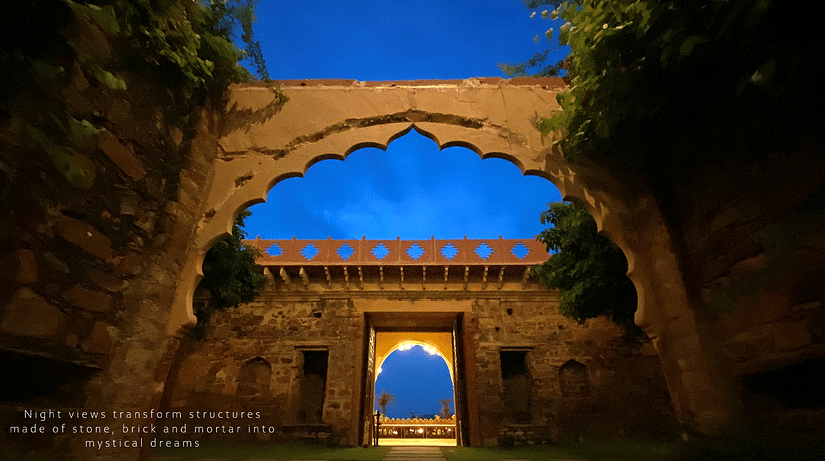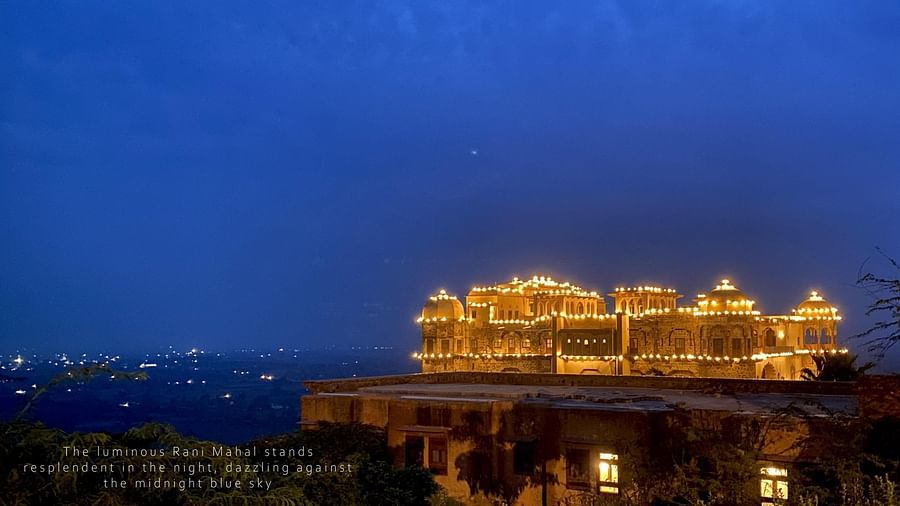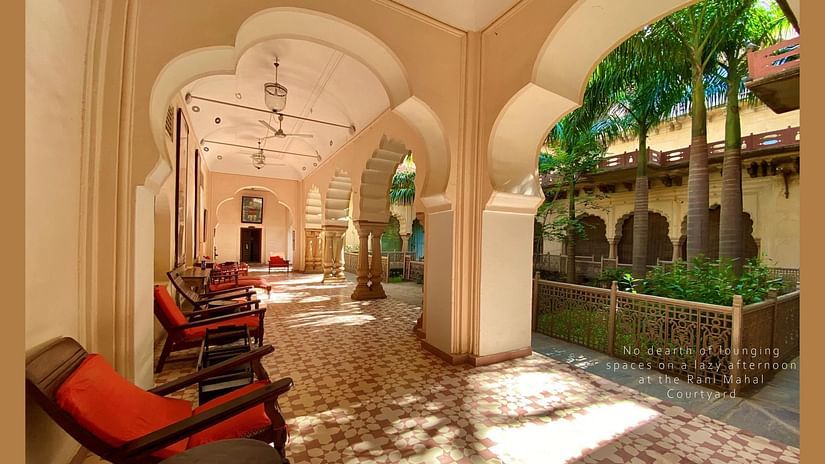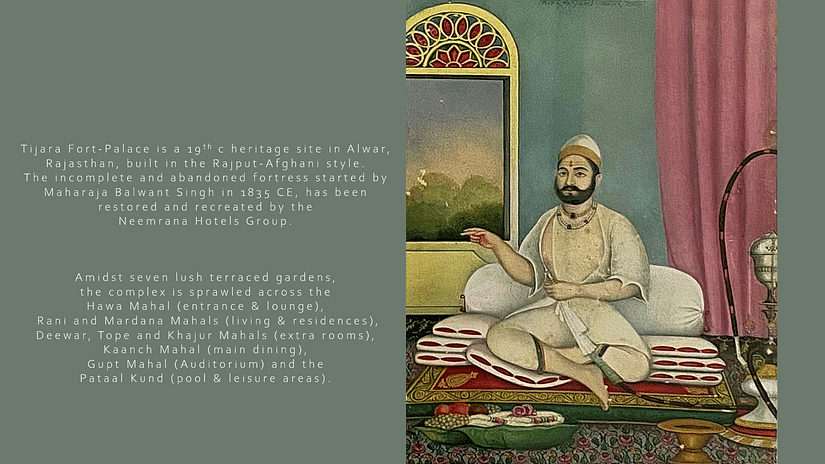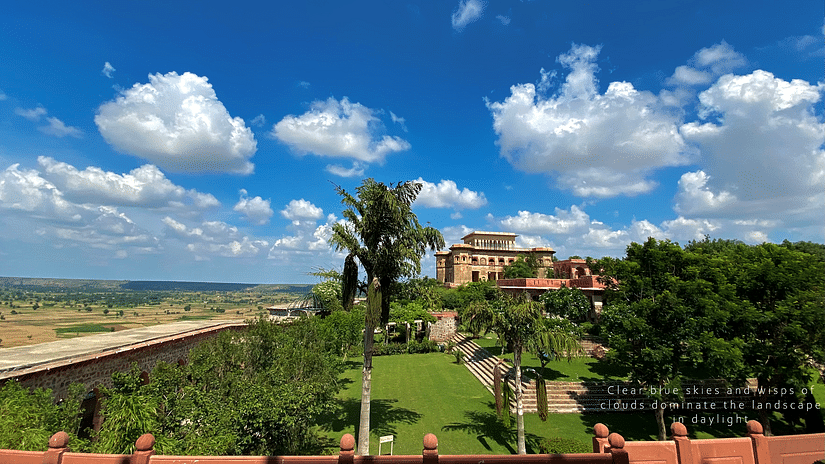Of Mystical Spaces and Hidden Treasures
The art of photography is less about the things we see, and more about ‘how’ we see them. As a photographer, I have a voracious appetite to ‘see more’. At sixteen, on getting my first Nikon, I began to experience the excitement of seeing through a lens. My camera, and the hunger of seeing more than just what meets the eye, soon became a defining factor.
At Neemrana’s 19thcentury Tijara Fort-Palace, everywhere I looked, every nook and corner was steeped in history and beauty. From sunrise to sunset, the play of light on the heritage architecture kept me captivated and on my feet. While others rested after sumptuous feasts at the Kaanch Mahal, I was on my walks with my camera seeking out a good view. I discovered that Tijara offered more than just historical artefacts - the hidden treasures were in fact, the carefully curated spaces that allowed me to soak in quiet moments of simple beauty and solitude.

